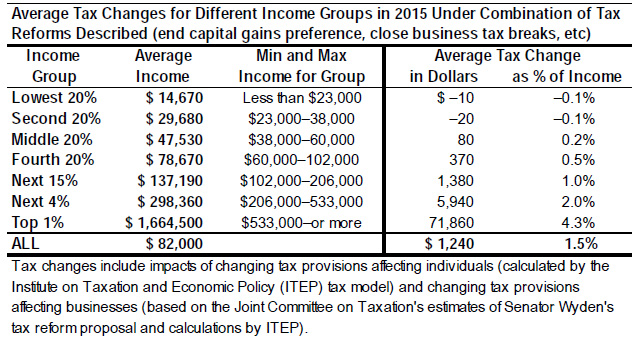 At the behest of Kansas Governor Sam Brownback, the state legislature has enacted two rounds of major tax cuts that disproportionately benefit the wealthiest Kansans. After signing into law the first set of tax cuts, Governor Brownback called the radical bill “a real live experiment.” He was quite proud of the legislation, saying that it wouldn’t affect the state’s ability to provide quality education and meet the needs of its poorest residents because the tax cut would eventually pay for itself by generating increased economic growth. The Governor said, “I want to ride the income tax rates on down, keep this glide path going to zero that we’re on, to get to a pro-growth position.” But any good experiment calls for constant monitoring and so far, the Governor’s experiment is failing.
At the behest of Kansas Governor Sam Brownback, the state legislature has enacted two rounds of major tax cuts that disproportionately benefit the wealthiest Kansans. After signing into law the first set of tax cuts, Governor Brownback called the radical bill “a real live experiment.” He was quite proud of the legislation, saying that it wouldn’t affect the state’s ability to provide quality education and meet the needs of its poorest residents because the tax cut would eventually pay for itself by generating increased economic growth. The Governor said, “I want to ride the income tax rates on down, keep this glide path going to zero that we’re on, to get to a pro-growth position.” But any good experiment calls for constant monitoring and so far, the Governor’s experiment is failing.
For starters, there is evidence that local governments are feeling enormous pressure to make up for reductions in state support by increasing their property tax rates. Hannes Zacharias, Johnson County’s Manager said, “Indeed, we are at the end of the food chain, and we’re the ones who have to clean up the mess.” And as the Associated Press reports: “the county has lost state revenue for jobs such as inspecting sewer septic tanks for new residents in rural areas. In addition, furloughs in district court operations caused by limited state funds mean defendants must stay in county jails longer while awaiting trial, a cost picked up by local governments.”
And what of the Governor’s promise to continue to provide quality education? It turns out that this is another instance where the state’s supply-side experiment has apparently been less than successful. The Lawrence Journal-World reports that because of cuts in state classroom spending, school finance as a percentage of Kansas personal income will next year hit its lowest level in history. And soon the Kansas Supreme Court will be taking up this very issue. The Topeka Capital-Journal writes that the lawsuit before the Kansas Supreme Court could actually “end Brownback’s tax legacy.” If the Court rules that more state money needs to be spent on public education, the legislature will likely need to raise hundreds of millions of dollars in new taxes.
The Governor’s office claims that state general fund monies to schools have increased since he took office, but this is apparently because the administration is now including contributions made to teacher retirement funds in its math. Teacher retirement funding dollars have never been used to calculate overall classroom spending in the past.
So far, the Governor’s experimental policies are actually not that popular with Kansans. But in some circles, the clamor for tax cuts persists. Infamous billionaire anti-taxer Rex Sinquefield, for example, is urging Missouri lawmakers to follow Kansas’ lead. He writes (with no evidence) of the Kansas experience: “Lower income tax rates have in fact stimulated the economy by reducing the price both of work and conducting business in the state, not to mention that lower rates have predictably proven effective when it comes to luring out-of-state businesses to Kansas’ friendlier business environment.”
Thankfully, the Kansas City Star took the time to refute Mr. Sinquefield’s wild claims: “What we do know is corporations have moved from Missouri to Johnson County and vice versa because of generous tax incentives that have nothing to do with Brownback’s income tax cuts. One year later, what we also know is from July through September, revenue to the state coffers has declined by $135 million, or a 9 percent drop from last year. The Legislature’s research staff projects that there will be a net reduction this fiscal year of a half billion dollars and a billion dollars by 2018.”
 The House and Senate budget conference committee that was formed as part of the deal that ended the federal government shutdown and raised the debt ceiling is unlikely to come to any “grand bargain” that dramatically reduces the deficit or increases public investments. This is because, as House Budget Committee Chairman Paul Ryan reiterated this week, Congressional Republicans will oppose any proposal that includes new revenue.
The House and Senate budget conference committee that was formed as part of the deal that ended the federal government shutdown and raised the debt ceiling is unlikely to come to any “grand bargain” that dramatically reduces the deficit or increases public investments. This is because, as House Budget Committee Chairman Paul Ryan reiterated this week, Congressional Republicans will oppose any proposal that includes new revenue.




 Colorado’s Child Care Tax Credit would be expanded for low-income families under a bill
Colorado’s Child Care Tax Credit would be expanded for low-income families under a bill  Last week, the Illinois Supreme Court
Last week, the Illinois Supreme Court 




 Earlier this month, with an unexpected $100 million biennial budget surplus burning a hole in his pocket, Wisconsin Governor Scott Walker
Earlier this month, with an unexpected $100 million biennial budget surplus burning a hole in his pocket, Wisconsin Governor Scott Walker